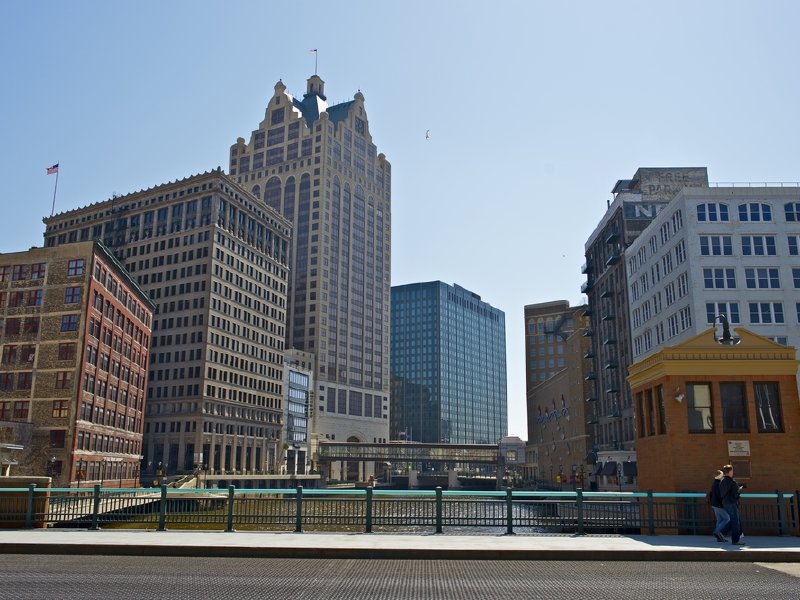Density. Discovery. Diversity. These three "Ds" make downtowns great. And, when they work together and are well connected downtowns truly flourish.
I’ve lived and/or worked in greater Downtown Milwaukee for more than 25 years, and in the last 15 or so it’s really seen a massive transition. Yet, I’ve always lamented the fact that it’s way too spread out. Stuff’s not well connected and unless you spend large amounts of time here (like many of us do, including the 80,000-plus who work here) it’s hard to easily walk from here to there. Sure, I can get to where I need to fairly easily but it should be more intuitive for visitors.
A new report by Hunden Strategic Partners in Chicago was presented yesterday at a Public Policy Forum luncheon at the Intercontinental Milwaukee. The report, commissioned by the Greater Milwaukee Committee and Milwaukee Downtown Business Improvement District No. 21, says pretty much what I just mentioned noting "due to the large physical area taken up by Downtown, Milwaukee's nodes of dining and nightlife activity are fairly spread out and there is no easy way to experience them all without using a car."
Yep, that’s an issue.
It’s not just what we have and don’t have. It’s that many of the great amenities we have in Downtown are not connected in the right way.
Overall, the Hunden Report makes some obvious but not apparent to all observations. Here are some of the other findings taken directly from the report:
- Milwaukee’s Downtown has fewer dining options, by a large margin, than the peer cities in the report. And, "the lack of ‘easy’ walkable dining options before and after games, concerts and conventions may contribute to the feeling that there is not as much happening Downtown."
- While Milwaukee meets the average number of the peer set for high end restaurants, Downtown Milwaukee features far fewer restaurants at every other level of price compared to its peers.
- The development of a new arena for the Bucks is a critical component for the entertainment assets of Downtown.
- The convention center and walkable hotel package are both extremely undersized. Regardless if the Wisconsin Center expands, it requires a new convention hotel to at least correct the balance of rooms to convention center size. As it stands today, the hotel room deficit near the Center is about 400 rooms. With the proposed expansion of the center, that gap will require an 800- to 1,000-room hotel to keep the package competitive. This hotel should be within a block or connected to the convention center. Walkability is a key consideration for meeting and convention planners and Milwaukee is currently at a disadvantage in this category.
Bottom line, Downtown Milwaukee is the heart of Wisconsin. We need to continue to nurture and strengthen it.
A life-long and passionate community leader and Milwaukeean, Jeff Sherman is a co-founder of OnMilwaukee.
He grew up in Wauwatosa and graduated from Marquette University, as a Warrior. He holds an MBA from Cardinal Stritch University, and is the founding president of Young Professionals of Milwaukee (YPM)/Fuel Milwaukee.
Early in his career, Sherman was one of youngest members of the Greater Milwaukee Committee, and currently is involved in numerous civic and community groups - including board positions at The Wisconsin Center District, Wisconsin Club and Marcus Center for the Performing Arts. He's honored to have been named to The Business Journal's "30 under 30" and Milwaukee Magazine's "35 under 35" lists.
He owns a condo in Downtown and lives in greater Milwaukee with his wife Stephanie, his son, Jake, and daughter Pierce. He's a political, music, sports and news junkie and thinks, for what it's worth, that all new movies should be released in theaters, on demand, online and on DVD simultaneously.
He also thinks you should read OnMilwaukee each and every day.







